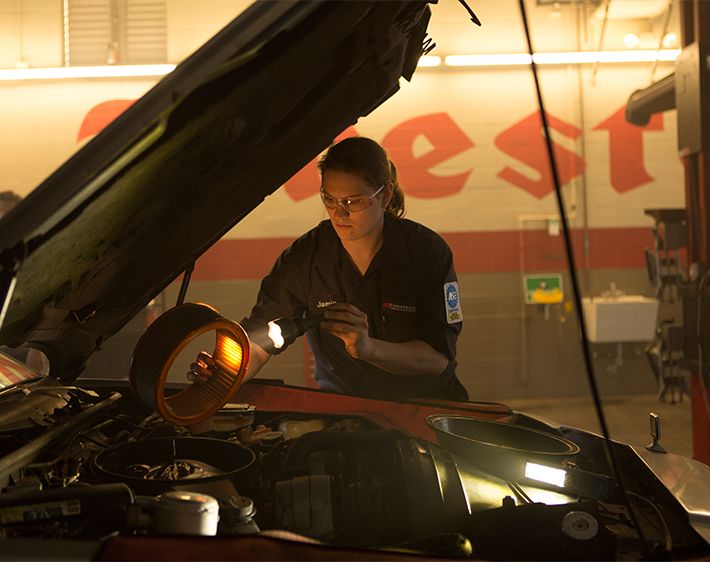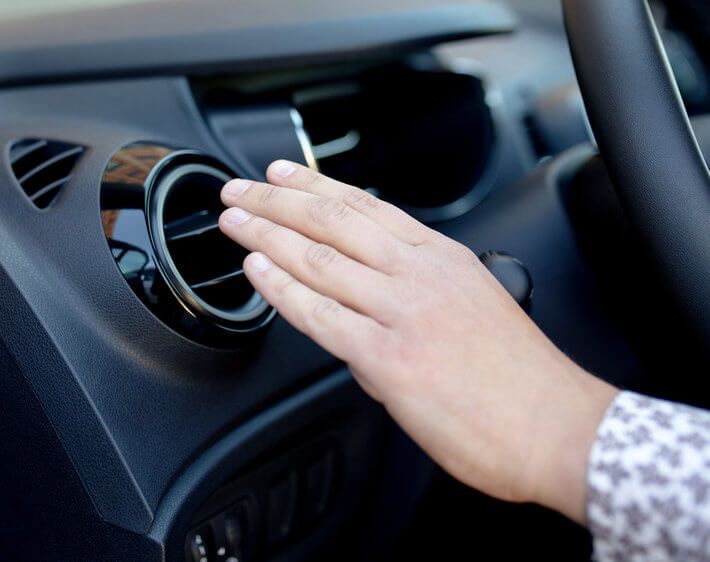Making sure your exhaust system is in tip-top shape is vital to maintaining your car’s health, kind of like keeping your body tuned up with a variety of fruits, grains, and veggies. A poorly functioning exhaust system means lower fuel efficiency, decreased power, and could even lead to costly damage down the line. More importantly, the exhaust system’s primary function is to guide the poisonous gases produced in your engine away from you and your passengers and safely out the tailpipe. A malfunctioning exhaust system could mean that those toxic emissions are being piped into your vehicle, where they can do serious damage to your health.
Follow along as we dig into how your exhaust system works, part by part. Learn how your exhaust system tends to fail and how the experts at Firestone Complete Auto Care can restore your vehicle's health and your peace of mind.
Where It All Starts: The Exhaust Manifold
The exhaust manifold is where the waste products of combustion (exhaust fumes, excess heat and sound waves) first enter your exhaust system. If your exhaust system is working properly, all three will be reduced so that your engine runs smoothly and you won’t be bothered by excessive noise or exhaust odors.
Within the exhaust manifold is a nifty feature that's found in most cars manufactured after 1980: the oxygen sensor. This high-tech sensor monitors the level of unburned oxygen in the exhaust in order to gauge your car's fuel mixture. It helps your engine perform at its best by telling the car's computer when the fuel mixture being delivered to the engine needs to be adjusted.
Emissions are at their loudest, hottest, and most toxic state when they first enter the exhaust manifold. As a result, the manifold is particularly vulnerable to damage. Signs that you might have a cracked manifold include increased engine noise, decreased fuel efficiency, and vibrations in the driver’s seat, gas pedal, or steering wheel. If your vehicle is experiencing any of these symptoms, you better get down to your local Firestone Complete Auto Care ASAP. A damaged exhaust manifold could mean that toxic fumes are leaking into your car, which is bad for you, your passengers, and the environment.
Where It All Goes Next: The Catalytic Converter
The next stop for the fumes from your engine is the catalytic converter, where harmful carbon monoxide, nitrous oxide, and hydrocarbons are converted into water and carbon dioxide. Since the main purpose of the catalytic converter is to reduce pollutants, your car is unlikely to pass emissions testing if it isn’t working correctly.
Catalytic converters rarely break down, except in older vehicles, but when they do they can cause serious problems. The converter is essentially a block of ceramic plating. Over time that plating can break down and crumble. When this happens, you’ll hear a loud sound like rocks being shaken inside a metal tin. That’s a sure fire sign that your exhaust system needs some TLC. Don’t turn up your radio to drown out the noise, if left alone those bits of ceramic could get loose and clog up your exhaust system. That’s a big ouch for your car, and for your wallet.
Where It All Quiets Down: The Muffler
The muffler’s job is to reduce the noise produced by your engine so that it doesn’t become a nuisance. Without getting too technical, the muffler acts as a resonance dampener, forcing sound waves to bounce around chaotically until they cancel each other out.
If your muffler is damaged, there will be lots of noise, especially at higher speeds or during acceleration. A damaged muffler could also mean that you have an exhaust fume leak. Luckily, by this stage, the majority of the most harmful pollutants in your exhaust have been weeded out by the catalytic converter, but your exhaust still contains enough carbon monoxide to damage your health (and even kill you). So when your muffler isn’t muffling, heed its warning and get it checked out.
Where It All Exits: The Exhaust Pipe/Tail Pipe
The exhaust pipe is a long metal tube that guides your engine’s emissions through the exhaust system and, ultimately, out of your car. The joints and connector pieces that connect the exhaust pipe to each component of the exhaust system are particularly vulnerable to corrosion, making them the usual suspects in exhaust system mishaps.
Generally corroded joints are easily replaceable, as long as they are dealt with before they become too much of a problem. Remember, any flaws or defects in your exhaust pipe could lead to fumes venting into your car, so again, it’s best to get your car to a professional as soon as you notice increased or unusual noise.
Health Check! Time For An Emissions Test
A good indicator of your overall exhaust system’s health is an emissions test. If you are worried about your fuel efficiency, or if it’s been awhile since you’ve had your exhaust system inspected, turn to the expert technicians at your local Firestone Complete Auto Care. Remember: poorly performing exhaust systems can negatively impact your car, your health, the environment and your wallet. Visit your nearest shop for an emissions test and care inspection today!



